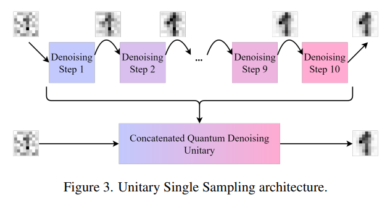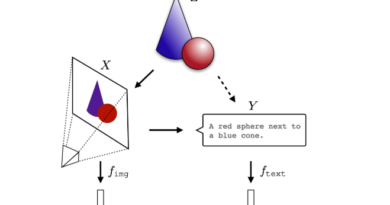AI with HITL: Future of Tech & Ethics
Imagine a society in which people and machines work together rather than competing. Where artificial intelligence enhances our capabilities and human intuition guides its path. Where robots and humans collaborate in industries, AI-powered traffic signals that respond to real-time congestion, guided by human input on alternate routes and special events, and so on.
This is the promise of Human-in-the-Loop AI, a new technique in which human preferences act as an invisible conductor, impacting intelligent machine’s decisions and outputs that optimizes collaboration by combining the best of both worlds.
Let’s deep dive into this collaboration! Understanding all the essential components and how our input, from explicit instructions to implicit feedback, influences AI’s performance is essential for ensuring that this technological symphony meets society’s demands.
Artificial Intelligence
AI refers to the simulation of human intellect in machines. Imagine robots learning, reasoning, and solving problems in the same way that we do. AI analyses data, predicts outcomes, and even creates art using a variety of approaches ranging from machine learning to natural language processing. While still in development, artificial intelligence is already altering areas such as healthcare, banking, and transportation, suggesting exciting possibilities for the future.
Unlike humans, AI cannot provide intuition, ethical reasoning, or real-world context. This is where the concept of Human in the loop(HITL) comes in.
Human-in-the-loop AI?

Human in the loop (HITL) AI is a fascinating notion in which humans and machines collaborate to make AI systems more powerful, ethical, efficient, and adaptive. It’s like creating a dream team.
Consider AI to be a brilliant mathematician, crunching numbers and producing solutions quickly. However, like any formula, AI can have weaknesses. It may overlook nuances, misread data, or struggle with ambiguity. This is when humans step in as wise mentors. They offer their judgement, creativity, and understanding of context, ensuring AI does not become a runaway equation.
While artificial intelligence (AI) has made incredible advances in recent years, it is not ready to steal our jobs and take over the world (at least not anytime soon). In fact, the most powerful AI applications frequently incorporate a critical component that distinguishes them: humans. This symbiotic interaction, known as Human-in-the-Loop (HITL) AI, is where the real magic happens.
Consider building an AI model to detect skin cancer with high accuracy. But what if there is an edge case that the model has not encountered? That is where a human doctor comes in, assessing the AI’s forecasts and noting any potential false negatives. Human insight serves as a safety net, ensuring that the AI operates ethically and responsibly.
Why is it important?
While AI can execute certain jobs with incredible precision, it cannot entirely imitate human intelligence and creativity. AI lacks consciousness and emotions, which limit its ability to comprehend complicated human experiences and produce truly creative creations.
- AI models may inherit biases from their training data, resulting in unfair or discriminating outcomes. Human oversight aids in the detection and mitigation of these biases.
- Complex artificial intelligence models can be black boxes, making it impossible to understand how they make judgements. Human participation enhances interpretability and fosters confidence.
- AI may struggle with unexpected or rare scenarios. Humans provide the flexibility and adaptation required to properly manage these edge circumstances.
Real-World Use Cases
1. Early Cancer Detection
- Advanced algorithms analyze medical images (mammograms, X-rays, and CT scans) at speeds and scales unrivalled by humans.
- AI detects probable cancer tumours or anomalies that human eyes would miss, typically far sooner than traditional methods.
- Experienced radiologists or oncologists analyze AI-flagged images and make informed conclusions based on their clinical judgement and patient history.
- Humans consider aspects other than picture patterns, such as patient symptoms, risk factors, and medical history, to improve diagnostic accuracy and prevent false positives.
2. Content moderation
- Artificial intelligence algorithms monitor social media postings, photographs, and videos to identify potentially hazardous content such as hate speech, violence, or misinformation.
- Human moderators evaluate flagged content and make final choices about whether to remove or preserve it based on context and guidelines.
- This joint method combines AI efficiency and human judgement, resulting in a safer and more balanced online experience.
3. Customer service chatbots
- AI-powered chatbots respond to early client inquiries, giving basic information and help.
- For complex concerns or emotional demands, chatbots smoothly shift discussions to human agents, delivering personalised and compassionate support.
- This combination of AI and human touch leads to a more efficient and gratifying consumer experience.
4. Self-driving vehicles
- The majority of driving responsibilities are handled by AI algorithms (steering, braking, and navigation), although human supervisors keep an eye out remotely for unexpected scenarios.
- If the AI encounters a difficult situation, humans can take over remotely or provide direction, ensuring safety and adaptability.
- This HITL strategy builds trust in autonomous vehicles while expediting their development.
5. Fraud Detection
- AI examines financial transactions to identify patterns that indicate possible fraud.
- Human analysts evaluate flagged transactions and make final conclusions based on their understanding of fraud schemes and client behaviour.
- This collaborative strategy lowers financial losses and protects businesses and individuals from fraudulent activity.
6. Product recommendation
- AI analyses client data and purchasing habits to make personalized product recommendations.
- Human experts curate product options and make suggestions based on individual client needs and interests.
- Customers benefit from a more interesting and relevant shopping experience thanks to the combination of AI and human insights.
Benefits of HITL
Human oversight guarantees that AI follows ethical ideals and avoids misuse. Humans may make sensible decisions on data privacy, transparency, and accountability.
- Human involvement in AI research and operation allows us to detect and resolve any hazards ahead of time.
- HITL supports collaboration among various stakeholders, resulting in more inclusive and equitable AI applications.
- Transparency in AI decision-making processes builds confidence with users. Humans can explain how AI arrived at a certain result, alleviating worries about bias and opacity.
- Human feedback helps to enhance and improve AI models’ accuracy. Collaboration allows AI systems to learn and adapt more quickly, resulting in improved performance.
- Humans can bring subject expertise and information that AI algorithms may lack, resulting in more informed and comprehensive solutions.
- Continuous collaboration between humans and AI generates a dynamic feedback loop that drives continuous progress in AI systems.
The Future
HITL will broaden its scope beyond its existing boundaries, shaping industries such as:
- Smart cities: Using collaborative human-AI systems to improve public safety, manage energy grids, and optimize traffic flow.
- Manufacturing: Using intelligent robots with human oversight to revolutionize production processes and make real-time modifications.
- Agriculture: Precision farming using AI to analyze soil conditions, weather patterns, and crop health, all guided by human expertise.
The interaction between humans and AI will strengthen, fostering:
- Natural language interfaces and intuitive technologies will enable seamless communication and collaboration between people and AI.
- AI will grow more attentive to human feedback and learn from experience, always improving its decision-making and adapting to changing circumstances.
- Humans and AI will collaborate, harnessing each other’s abilities to make educated and ethical decisions in real time.
- Technology should be developed to empower and supplement human talents rather than replace them.
Overall, the future of HITL AI promises a world in which humans and computers collaborate as partners, maximizing each other’s skills to build a better future for everyone. As this powerful synergy takes shape, we should expect breakthroughs in healthcare, education, environmental preservation, and a variety of other fields.
Explore 3600+ latest AI tools at AI Toolhouse 🚀. Don’t forget to follow us on LinkedIn. Do join our active AI community on Discord.
Read our other blogs on AI Tools 😁
If you like our work, you will love our Newsletter 📰




